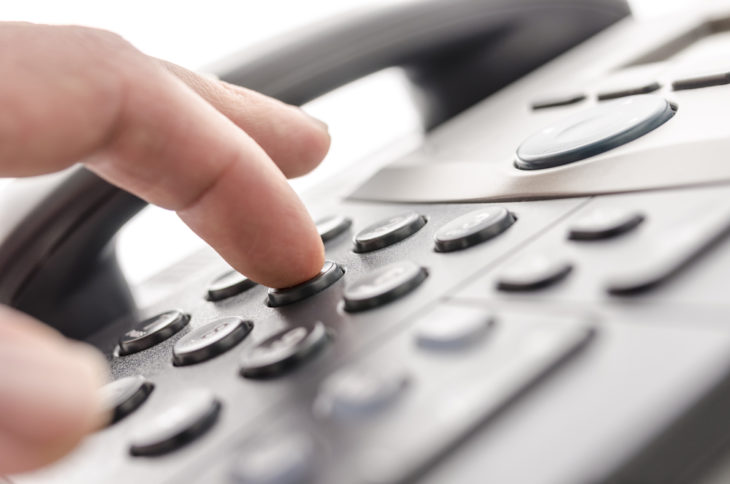In the world of sales, some things might be harder to understand while others are quite simple. Perhaps the easiest and most logical one involves representatives and prospects. For example, the higher the number of representatives who achieve or surpass their quota, the more potential customers a company will have.
And although spending time and money to motivate employees and sending them to training seminars are things that any great manager does, businesses still fail to see an increase in revenue, no matter how skilled their representatives are in cold calling – making unsolicited calls in order to sell goods and services.
One of the biggest causes of this problem is that sales representatives waste large amounts of time leaving messages or waiting for potential customers to answer their call. This is also the main reason barely more than half of the reps are able to reach their quota, especially when recent data suggests that while employees make an average of 52 calls per day, around 15% of their time is spent on leaving voicemails.
This is why aside from training and going to seminars, reps need to be equipped with the right toolkit and technology to optimize their work and boost efficiency. One such tool comes in the form of sales dialers. So, if you are unfamiliar with what they are and would like to know more about them, here are some things to have in mind.
Contents
What Are They?
Essentially, they are electronic devices designed to automatically make calls to numbers in a directory, eliminating the need for manual dialing when calling prospects. When using such devices, employees also do not have to wait to see if an individual will answer their call or not.
Some of the best brands have other special features and can automate a number of sales-related business processes as well.
An important thing to note is that these devices are not the robot-dialers which are, in most cases, illegal tools utilized for making hundreds of calls a day using automated voice messages. Sales dialers are only meant to ease the dialing process and nothing else.

Source: siclytics
What are the Available Types?
One can choose from 3 different device types and although their names might be confusing, it is far more important to understand what particular type is best suited for certain processes and workflows.
1. Power (Progressive)
They make single calls from an existing list of potential consumers, meaning representatives do not have the option to choose who to call and that every possible lead will be contacted. These devices continuously make new calls as soon as the previous one finishes. Most of them also allow employees to use pre-recorded messages if they reach a prospect’s voicemail or answering machine.
This is why they are optimal for teams that have a set script when contacting prospects. If you are interested, you can read more here about the various features this sales dialer has to offer.
2. Preview
Preview devices operate in the same way as progressive ones but do have one distinct difference – using this tool enables reps to check the list, preview a prospect, and decide whether to call them or not.
However, this option is the slowest among the three but is great for people who have a consultative sales approach. Having great workflow and using logic is important when using preview devices since representatives might need to determine which leads are optimal to contact at that specific moment or time.
3. Predictive (Automated)
These types are very efficient, fast, and are the ones that can be found in large corporations and are used in call centers. These devices allow representatives to call several prospects at once, meaning the time spent waiting to connect with potential leads is greatly reduced. Not being able to immediately connect with some of the prospects might be its biggest disadvantage.

Source: TSD Global
What Are the Benefits?
Increased Efficiency and Productivity
Not only will these devices save time but they will also give workers a chance to complete other tasks, for example, follow up on warm leads and possibly convert them into paying customers.
Since certain types enable calling multiple numbers at one time, it can greatly reduce idle time and give sales reps more time to talk with prospects. Agents no longer have to deal with busy tones and voicemail.
Minimized Human Error
People making mistakes in the workplace is not something abnormal or surprising. However, it should be minimized if not eliminated. Two different employees contacting the same client, a rep calling one prospect twice, dialing the wrong number are all human errors that could happen.
However, using automated calling devices will prevent and eliminate such things from happening.
Increased Conversion and Sales
Many of these devices can match outgoing calls with local numbers, reducing the amount of rejected or ignored calls. Certain types showcase a lead’s contact information that the sales rep can use to personalize the conversation, engage better with a potential client, and subsequently increase the chances of conversion.
Moreover, being able to make more calls than before and having more talk time also increases one’s chances of generating more lead conversions.
Monitoring and Reporting
the technology integrates with CRM (Customer Relationship Management) software that gives agents a complete overview of their activities. This means that all the collected data will give you better insight and help keep your database up-to-date.
Managers also have the opportunity to monitor their agent’s performance through various monitoring and recording interfaces which they can use to advise their employees and improve their skills and compile reports on every worker in their department.
Cost-Efficient
Businesses, and individuals are no longer required to set up PBX and there is no need for manually inputting call logs or other information since these systems do it automatically.

Source: techradar
Conclusion
If businesses want to see a rise in prospects and subsequently an increase in revenue, using sales dialers is not only important but also essential. They will greatly improve efficiency, help reps reach their quotas and ease the entire process too.
Consider choosing a type most suitable for your company and see for yourself just how beneficial these tools can be.
